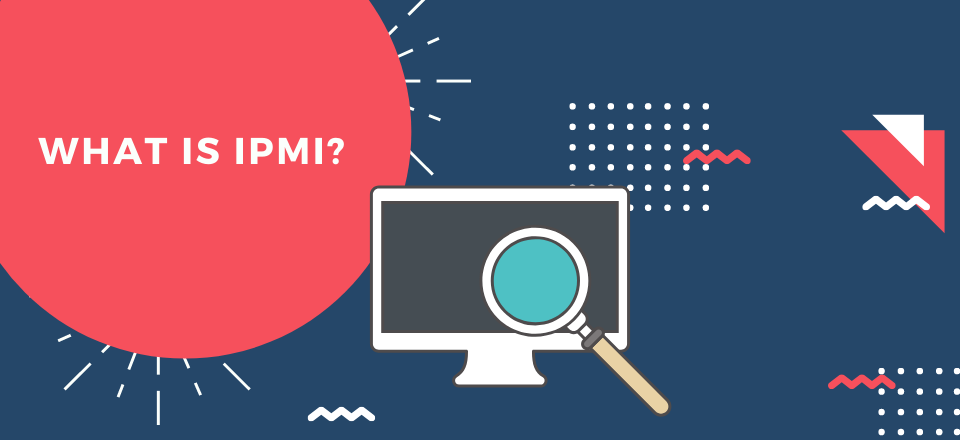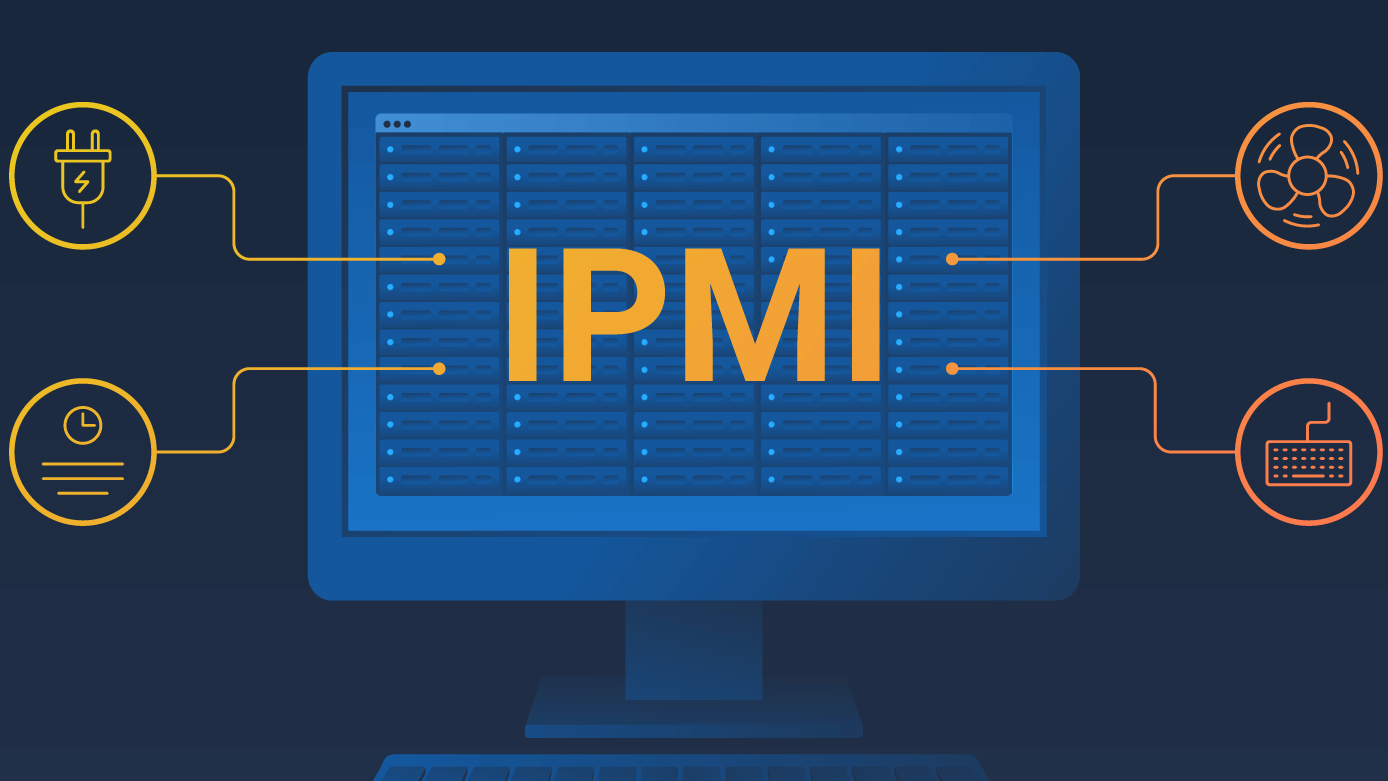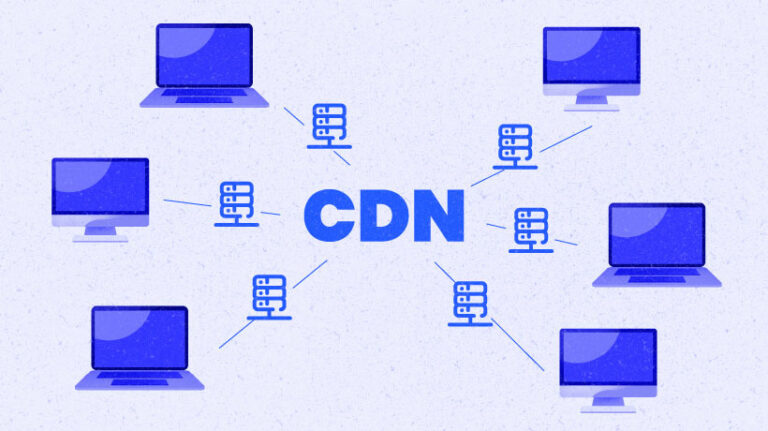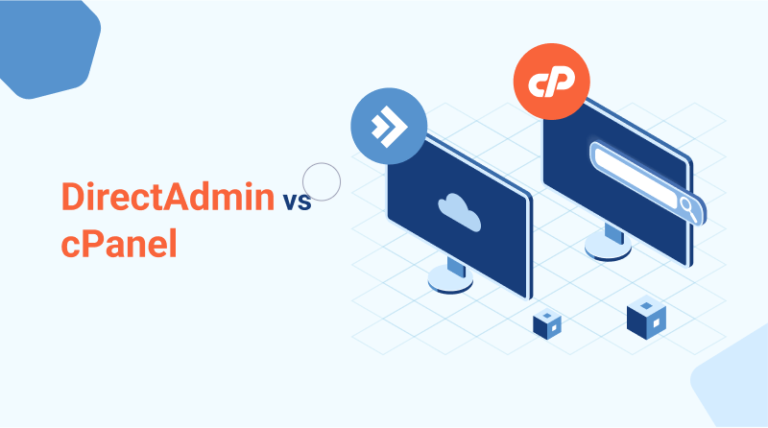IPMI – what it is, how to connect, benefits
Managing a server is often difficult, especially if it is not conveniently located. In such cases, IPMI (Intelligent Platform Management Interface) technology can be a great solution, providing remote access to the server and simplifying tasks such as rebooting the system. This allows you to respond quickly to critical failures, preventing damage to equipment. Let’s take a look at what IPMI is and how it works.
What is IPMI technology?
IPMI is an important technology for server management that provides remote access and control. It does not depend on a specific computer, server, or BIOS and helps to extend the life of equipment by preventing serious problems.
Main purpose and advantages of the technology
The main purpose of the intelligent platform management interface is to provide remote access to perform a number of tasks:
- Monitor equipment load, including checking component temperatures, voltage levels, and fan power. This helps to avoid overheating and other problems that can lead to equipment failure.
- Manage server performance and software updates. IPMI allows you to remotely reboot a dedicated server, install updates and fix errors, which reduces downtime and improves overall system performance.
- Checking the system’s peripheral components. This includes monitoring the status of hard disks, network interfaces, and other devices, which helps to identify and fix problems in a timely manner.
- Keeping records and analyzing events related to server operation. IPMI collects data on all important events, such as power failures, hardware errors, and other critical situations, which allows you to analyze and prevent problems from recurring in the future.
- Access to information about equipment operation. Engineers and administrators can receive detailed information about the system status, which helps them make informed decisions about server management and maintenance.
In addition to the basic functions, IPMI can offer additional features:
- KVM-over-IP. Remote access to the server console.
- Virtual Media. Connect virtual CD/DVD drives and USB flash drives to the server.
- Power Management. Manage server power.
- Security. Configure security settings.
- DNS management.
For example, if an engineer makes a mistake that requires reconfiguring the server, IPMI allows you to quickly change the necessary configurations. This technology is available in almost any situation, even if the operating system is unresponsive. It allows you to reboot the equipment remotely, ensuring that the server continues to operate.

Features of IPMI operation
Today, IPMI is the standard in server management. Engineers configure the BIOS and IPMI immediately after server deployment, eliminating the need for physical access to the server room.
Some of the popular server management solutions:
- Dell iDRAC;
- HP iLO:
- Lenovo IMM;
- Supermicro SIM (a universal solution for managing servers from different manufacturers).
IPMI is a powerful tool that can significantly increase the efficiency of server management and ensure their reliable operation.
Differences in IPMI solutions from different manufacturers may apply:
- The amount and completeness of information about the server. Some systems provide more detailed data, which helps in more accurate monitoring and management.
- Possibilities to obtain statistics on hardware operation, including data on performance, resource utilization, and other metrics that are important for analyzing and optimizing server performance.
- Unique applications for restoring the operation of components. Some manufacturers offer special utilities and programs that facilitate the process of recovering and repairing equipment.
- Remote management capabilities from any computer with the right extensions. This allows administrators to manage servers from anywhere in the world, which is especially important for large organizations with a branched infrastructure.
Despite the differences, the functionality of standard IPMI is sufficient for full server control and timely response to problems.
The components that underpin IPMI
The main component of the IPMI is the BMC microcontroller, which serves as the “brain” of the system. It is responsible for remote control and receives power from the motherboard, continuing to operate even when the system is turned off.
Nonvolatile storage is an important part of IPMI that continues to operate even when the control computer is turned off. It consists of three blocks responsible for generating or storing information about events on the server. It is important to regularly clear the storage log to avoid overflow and data loss.
The technology interface is based on the Intel 12c processor bus. All commands are sent to the BMC, which regulates their execution. The administrator controls the system with the help of commands that are processed and return a ready response.
Remote control interface
Different interfaces are used to connect to IPMI:
- LAN. The most common interface for managing the server over a network.
- USB. Used to connect to the server directly.
- IPMI-over-Serial. Connection via the serial port.
Modern IPMIs use a LAN interface for remote control over the Internet. The BMC interface is identified by IP address, and commands are routed through Serial Port Sharing and Serial-over-LAN, ensuring that all platform components communicate.
Limitations of IPMI
Despite its advantages, IPMI is prone to failures due to the following issues:
- Network problems (breakdowns, defects, broken ports).
- Software errors (bugs, errors in modules).
- Insufficient power of the components (overheating, processor failure).
- Power failure (disconnection of equipment from the power grid).
These problems can negatively affect server performance, as IPMI is the key to system management.
Advantages and disadvantages of IPMI
The advantages of IPMI technology include:
- The ability to remotely manage the server, which reduces the need for physical access and speeds up the problem resolution process.
- Real-time monitoring of equipment status, which allows you to respond to any changes in a timely manner and prevent serious failures.
- Ensure data security through access control and protection against unauthorized actions.
- Versatility and compatibility with various types of server hardware, making IPMI convenient for use in different environments and with different systems.
The disadvantages of IPMI may include:
- Potential security vulnerabilities that can be exploited by attackers to gain unauthorized access to the server.
- Dependence on a network connection, which can be a problem in case of network failures or malfunctions.
- Possibility of IPMI itself failing due to hardware or software errors, which may require additional efforts to fix the problems.
IPMI is not just a tool, it is an investment in the reliability and security of server hardware wherever it is installed.
Examples of IPMI usage
Let’s look at a few examples of how IPMI can be used in different scenarios:
- Small businesses. For small businesses, IPMI can be a time and resource-saving solution. With this technology, administrators can remotely manage servers without having to travel to the office or server room.
- Large corporations. In large organizations with distributed infrastructure, IPMI helps to centrally manage servers, ensuring high availability and reliability of systems.
- Data centers. In data centers, IPMI is used to monitor and manage thousands of servers, which allows you to quickly respond to any problems and maintain a high level of customer service.
The technology can also be used in educational institutions. In universities and colleges, it helps administrators manage training and research servers, providing access to resources for students and teachers.
The future of IPMI
The technology continues to evolve, offering new opportunities and improvements. In the future, we can expect to see:
- Improvements in system security, including the introduction of more advanced data protection methods and prevention of unauthorized access.
- Expanding the functionality and monitoring capabilities, which will allow even more detailed monitoring of server status and prevent potential problems.
- Increased compatibility with various types of hardware and operating systems, making IPMI an even more versatile tool for administrators.
- Integration with cloud services and platforms, which will allow you to manage servers and monitor their status from anywhere in the world using convenient web interfaces and mobile applications.
With the development of IPMI and its integration with other new technologies, this system will continue to be a key tool for administrators and engineers, ensuring high reliability and availability of server systems.








